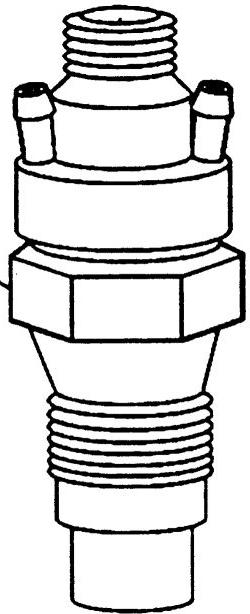Experienced motorists know that a largepart of the car breakdowns that may require expensive repairs is due to malfunctions in the operation of the cooling system, which cause the engine itself to overheat. Usually the cooling system is remembered only when critical situations occur. At best, car owners try to maintain a normal level of fluid in it, and if they measure the density of the liquid, then this is quite an ideal option. But the entire cooling system requires increased attention.
The main reasons for the failure of the cooling system are:
- Loss of tightness due to the destruction of oil seals in the water pump due to the presence of various particles in the liquid;
- deterioration of heat transfer due to contamination of the mixture with scale, deposits and rust.
In the process of exploitation of any car in thatIf the cooling system is filled with water, the walls of the cooling jacket gradually form scale, which becomes an obstacle to efficient transfer of heat from the engine to the water through the radiator tubes. In addition, there is a clogging of the passage of the tubes, which slows the circulation of the coolant, which can be the most likely cause of a strong engine overheating. Flushing the cooling system should be carried out twice a year, so that its efficiency will not decrease. There are several methods of washing. If we are dealing with a small scale deposit, the system can be washed with ordinary water, and it is worthwhile to separately wash the radiator and cooling jacket.
Flushing the engine cooling system
You must remove the thermostat, thenpressure to direct the contrary to the usual circulation of water in the radiator, by introducing it through the lower branch pipe, and pulling it through the upper one. In the cooling jacket of the engine, water is introduced through the upper branch pipe, and discharged through the lower one. Good results can be achieved with the simultaneous introduction into the system of a mixture of water with compressed air. Flushing the cooling system must be carried out until the dirty liquid ceases to exit. If there is a large amount of scale in the system, it is removed using a large amount of water with the addition of various solutions. At the moment, they can be called a huge number.
You can use a solution that consists of200 grams of chrome powder per 10 liters of water, which must be poured into the cooling system for 7-10 hours, and a solution of 500-600 grams of inhibited hydrochloric acid mixed with 20 grams of urotropine per 10 liters of water should be poured for two hours. After the specified time has elapsed, the engine must be allowed to run for 10-20 minutes, then drain the solution. After this procedure, it is necessary to rinse the cooling system with water 3-4 times more. To neutralize the remains of hydrochloric acid, you can pour a solution of soda ash at a rate of 700 grams per 10 liters of water. After the scale has softened, it can be removed by flushing as previously suggested.
Washing of the car cooling system,working with the application of non-freezing liquid, is carried out after 2 years of operation or 60 thousand kilometers of run. This is done as follows. First, the liquid must be drained with a drain hole in the lower radiator tank and the cylinder block, after which it is necessary to fill the water, start the engine until the bottom reservoir of the radiator is warmed, and then drain the water again when the engine is idling and running at a low frequency. After stopping the engine, it is cooled, then again filled with clean water, and the cooling system is again rinsed. Then the water again merges with the engine running at idle speed. And after it has completely cooled down, it will be possible to pour in a fresh coolant.
As you can see, the flushing of the cooling system is quite simple, but it requires the car owner to be attentive and timely.










